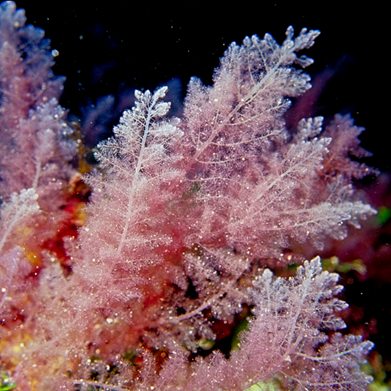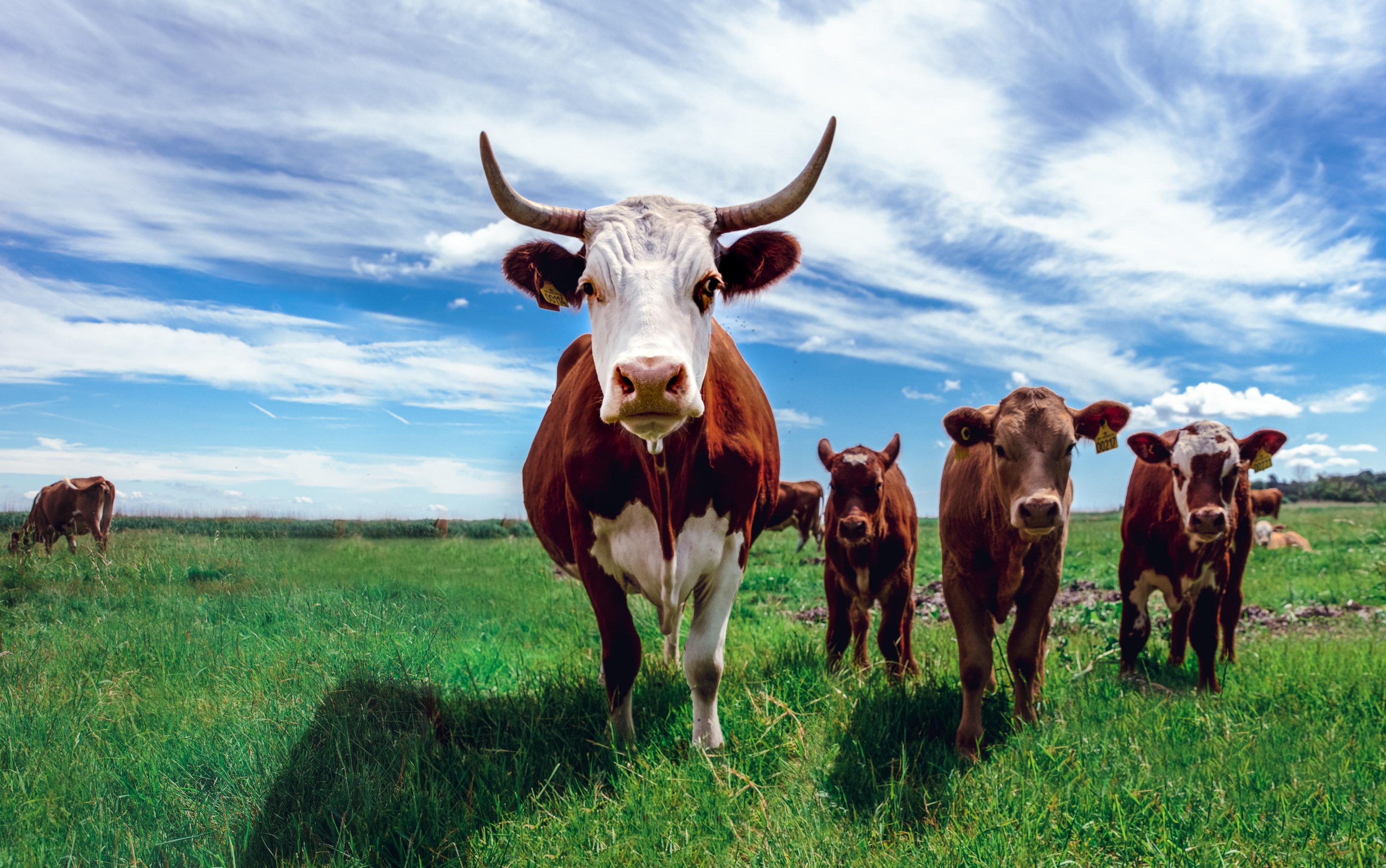California might be able to meet ambitious methane reduction goals by making cows less gassy.
Luke Gardner is a California Sea Grant aquaculture extension specialist at the Moss Landing Marine Lab with a creative solution to the growing problem of cow burps, which release the potent greenhouse gas, methane. Previous research has shown that certain seaweeds can alter cow digestion in lab experiments and reduce the production of methane gas by 99%, but will native California seaweeds have the same effect?
Gardner seems well suited to lead the Ocean Protection Council funded research project, which is administered by California Sea Grant. He spends his weekends raising beef cattle in the rolling hills of Carmel Valley, just east of Monterey Bay. This status as scientist-who-moonlights-as-rancher gives him perspective on the issue from multiple angles. As a scientist, he recognizes the importance of reducing greenhouse gasses, but as a cattle rancher, he sees the gassy digestion as lost energy which leads to lower productivity for the rancher. Soothing a cow’s digestion could not only reduce methane emissions, but also help them metabolize their food more efficiently.
“There might be an opportunity here where we can stop the release of the methane but also improve the bottom line of the actual dairy and beef producers,” says Gardner.
Although methane is short-lived in the atmosphere, it’s a greenhouse gas 25 times stronger than carbon dioxide. This is a problem worldwide, but the issue is acute in California, which aims to reduce methane 40% by 2030. The majority of this methane now comes from the more than 1.4 million dairy cows and 1 million beef cattle in the state.
The tropical seaweed Asparagopsis taxiformis was previously found to be successful at reducing methane in cow digestion, but is difficult to grow in aquaculture settings and harvesting it from the wild isn’t a commercially viable option. To produce enough seaweed to feed the state’s millions of cows, and do it in an ecologically sustainable manner, more research is needed.

“Our concept was, why don't we try and see if we can find something with similar properties that is native to California, and that is relatively easy to grow?” says Gardner.
His research team collected about 30 different local species, freeze dried them, and sent them to collaborators at the USDA. By combining the fluids from a cow rumen with the seaweed samples and grass, the scientists recreated cow digestion in a controlled lab setting. Digestion efficiency is measured in addition to methane emission, because the inclusion of seaweed in a cow’s diet has to be digestible above all.
These experiments showed two promising seaweed species: one that worked well for dairy cows, and another for beef cattle. Although these seaweeds had a milder effect on methane reduction than Asparagopsis, Gardner hopes they’ll be easier to grow. This brings the research to the next step in the process: growing the two species in aquaculture tanks at San Jose State University’s Moss Landing Marine Labs and measuring their growth rates under various conditions.
Once the scientists determine the optimal growth recipe, they’ll grow large amounts for the final step of the study. In this stage, the seaweed will be dried and sent to USDA collaborators at a Dairy Research Institute in Wisconsin, where it’ll be fed to cattle for several months. The gas emitted by the cows will be measured in what Gardner refers to as “basically a giant burp chamber.”
 The cow-feeding experiments will find the minimum amount of seaweed that can reduce methane in the cow’s digestive tract. Supplementing even 2% of a dairy cow’s diet of more than ten thousand pounds of feed per year adds up fast. With 1.4 million dairy cows in the state, this would require an enormous aquaculture operation. Gardner points out that a lot of unknowns remain to be explored, and it’s possible that the seaweed could be effective as a monthly supplement, or even fed to young calves to permanently alter their gut microbiome. But at the end of the day, the key is finding a seaweed that can be grown sustainably, cheaply, and easily.
The cow-feeding experiments will find the minimum amount of seaweed that can reduce methane in the cow’s digestive tract. Supplementing even 2% of a dairy cow’s diet of more than ten thousand pounds of feed per year adds up fast. With 1.4 million dairy cows in the state, this would require an enormous aquaculture operation. Gardner points out that a lot of unknowns remain to be explored, and it’s possible that the seaweed could be effective as a monthly supplement, or even fed to young calves to permanently alter their gut microbiome. But at the end of the day, the key is finding a seaweed that can be grown sustainably, cheaply, and easily.
Scientists aren’t exactly sure what it is about some seaweeds that alters a cow’s digestion, but the key ingredient may be bromoform. Many seaweeds naturally have high bromoform levels, but it is particularly prevalent in Asparagopsis. Unfortunately, bromoform acts as an ozone reducer, so part of the research now underway involves measuring the amount of bromoform released by each seaweed during its growth.
“This is where we need to be careful,” says Gardner. “If we're going to solve our methane problem and replace it with an ozone reducer, that doesn't hardly seem worth it.”
Gardner and his collaborators found methane-reducing properties in some of the local seaweeds lacking particularly high levels of bromoform, so it’s possible that some seaweeds may have different ways to reduce methane production.
“Seaweeds have all sorts of different things going on,” says Gardner. “They’re kind of like the Amazon rainforest, in terms of holding potential bioactive compounds that could lead to solutions for current and future issues similar to natural antibiotics.”
Like something from a science fiction novel, grasses from the sea could ultimately be the cure for land-dwelling mammals that are altering the Earth’s climate with their burps.
About California Sea Grant
NOAA’s California Sea Grant College Program funds marine research, education and outreach throughout California. Headquartered at Scripps Institution of Oceanography at the University of California San Diego, California Sea Grant is one of 34 Sea Grant programs in the National Oceanic and Atmospheric Administration (NOAA), U.S. Department of Commerce.